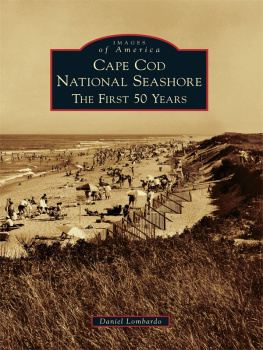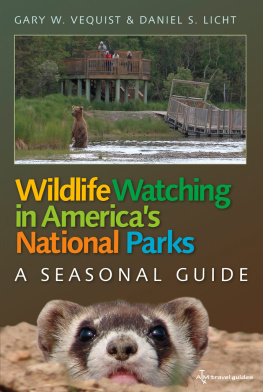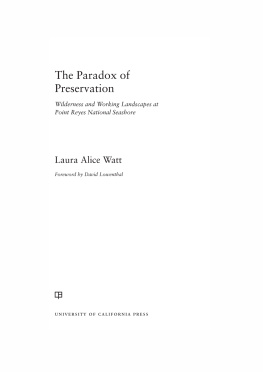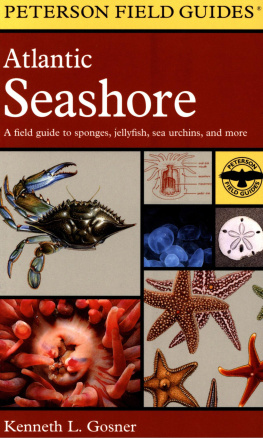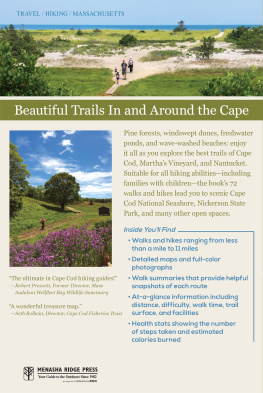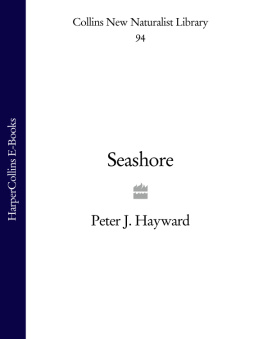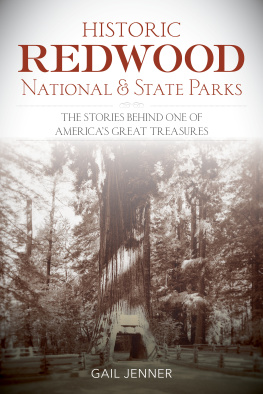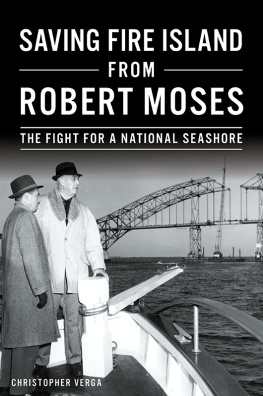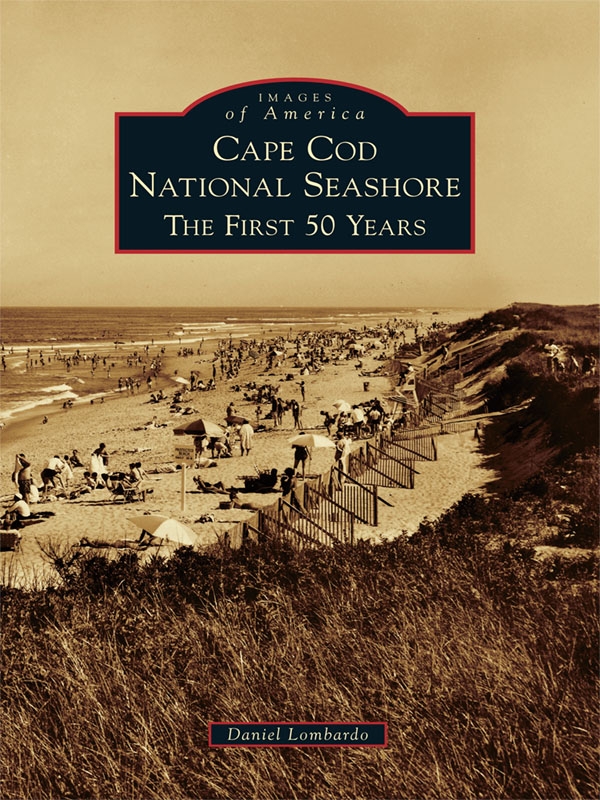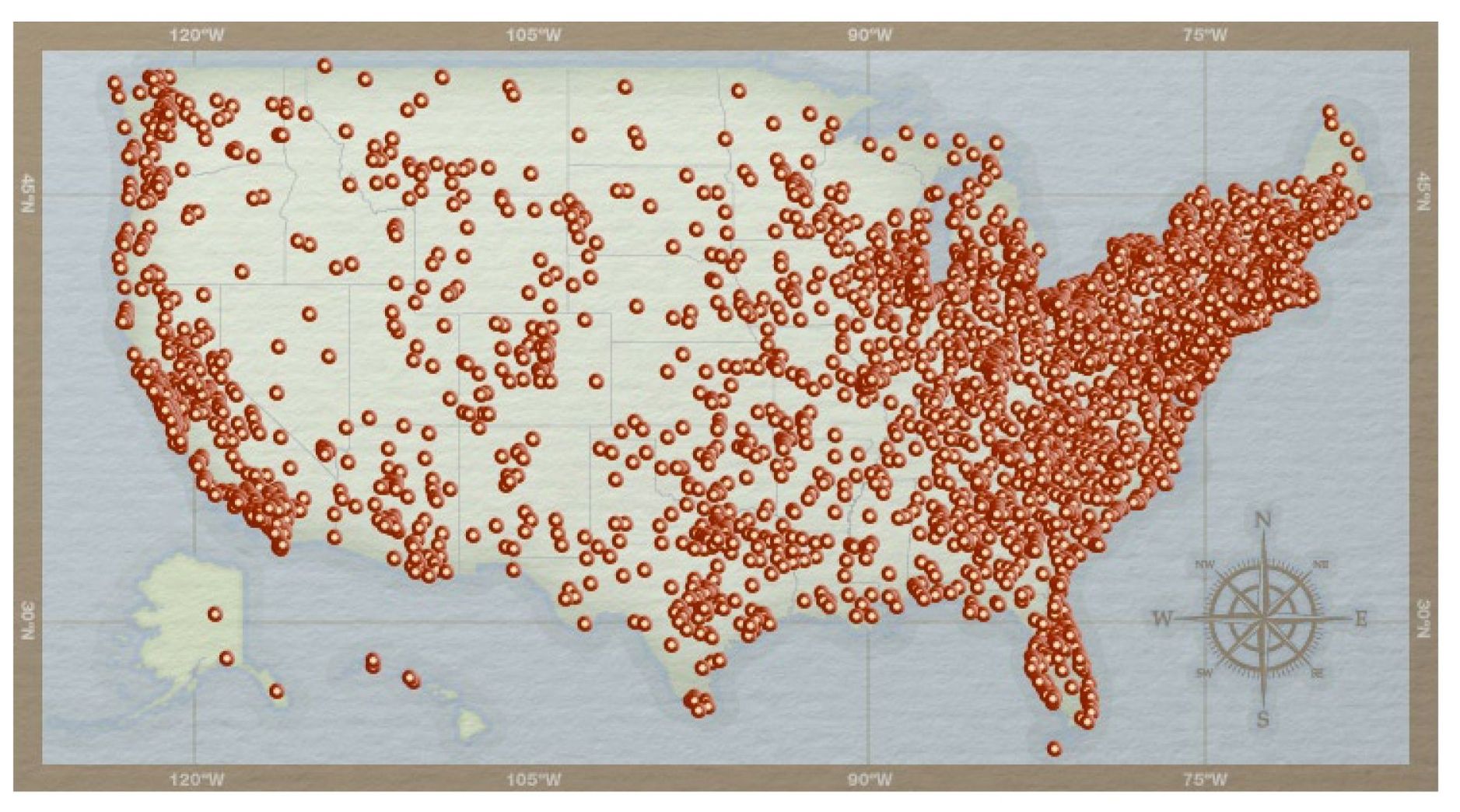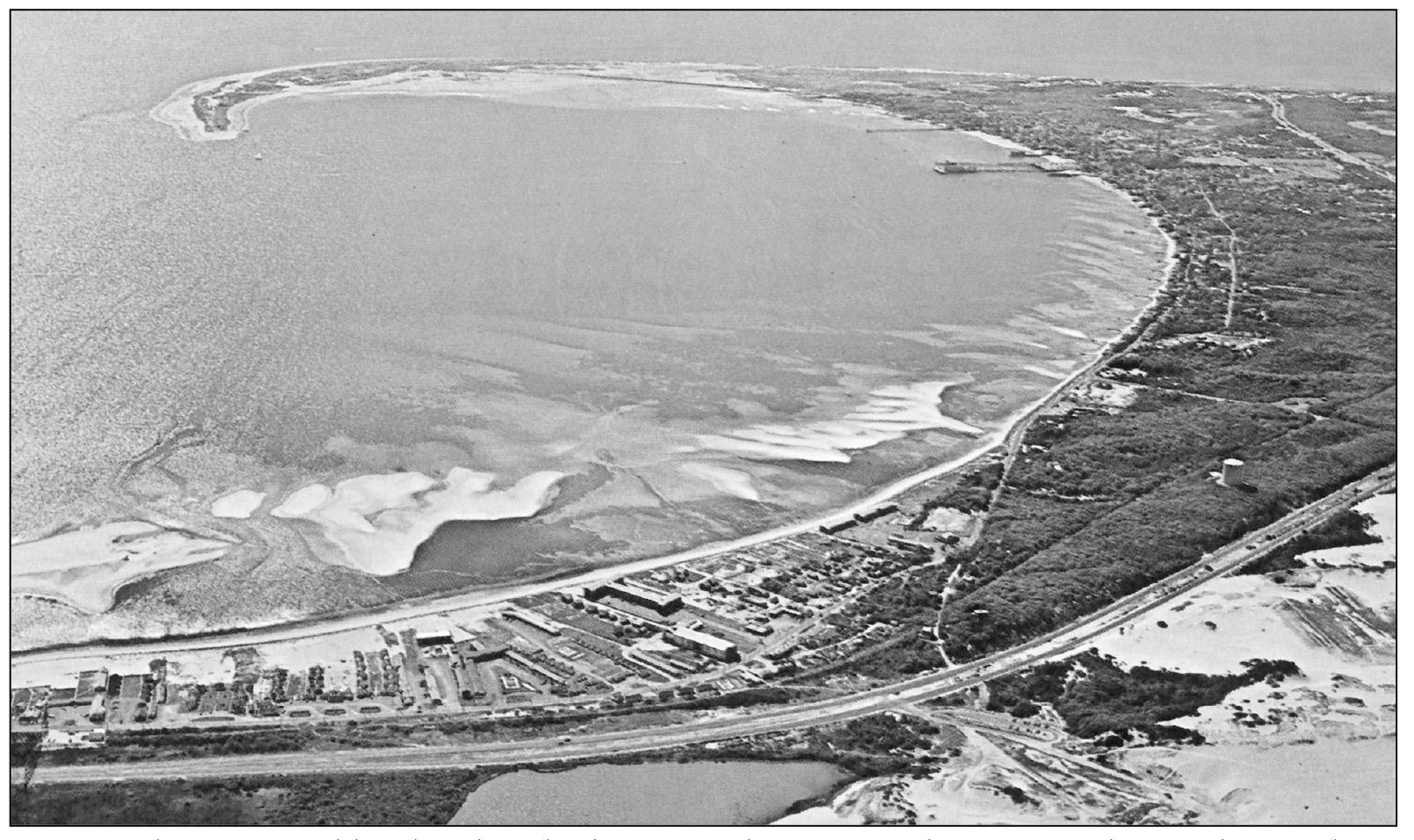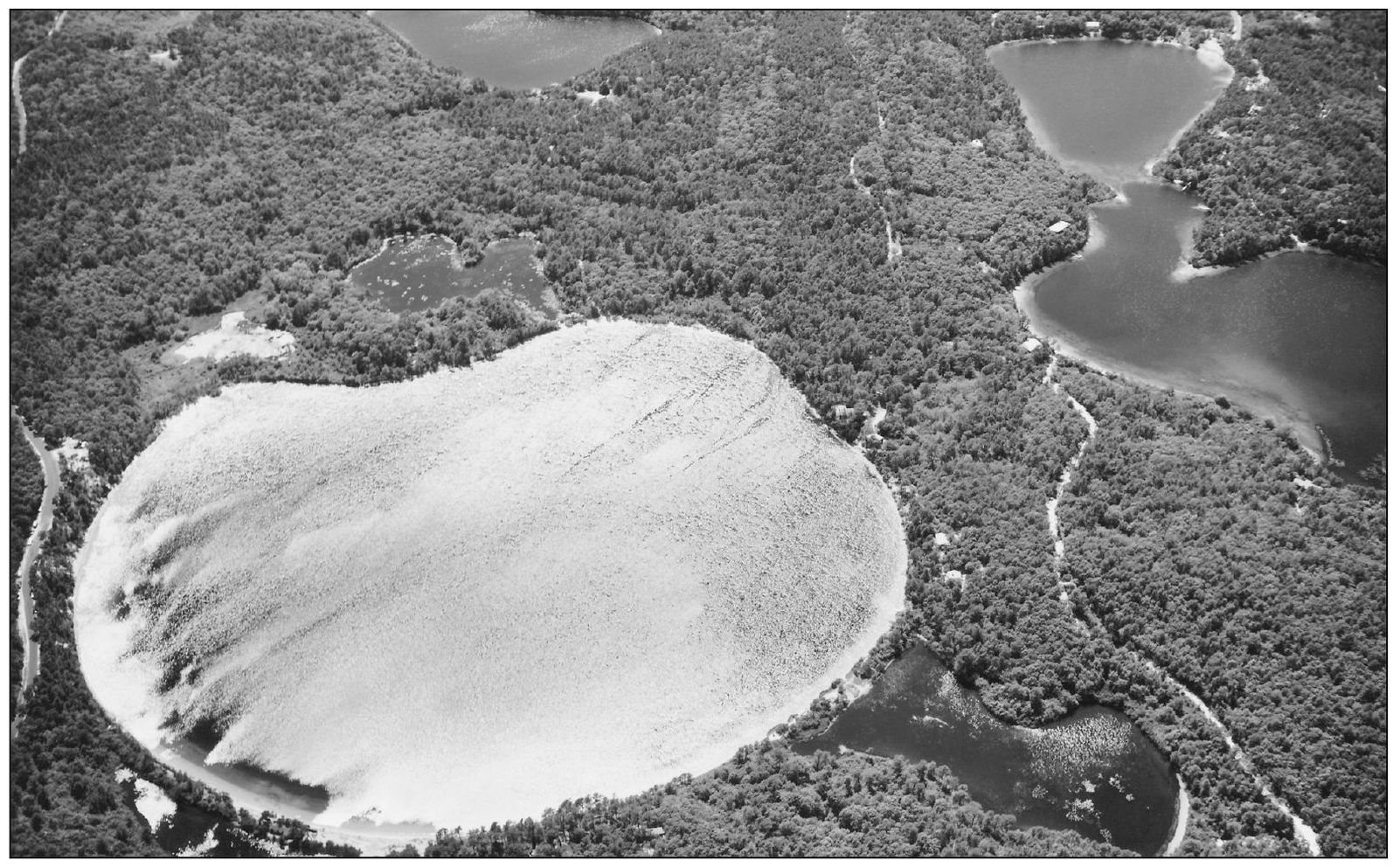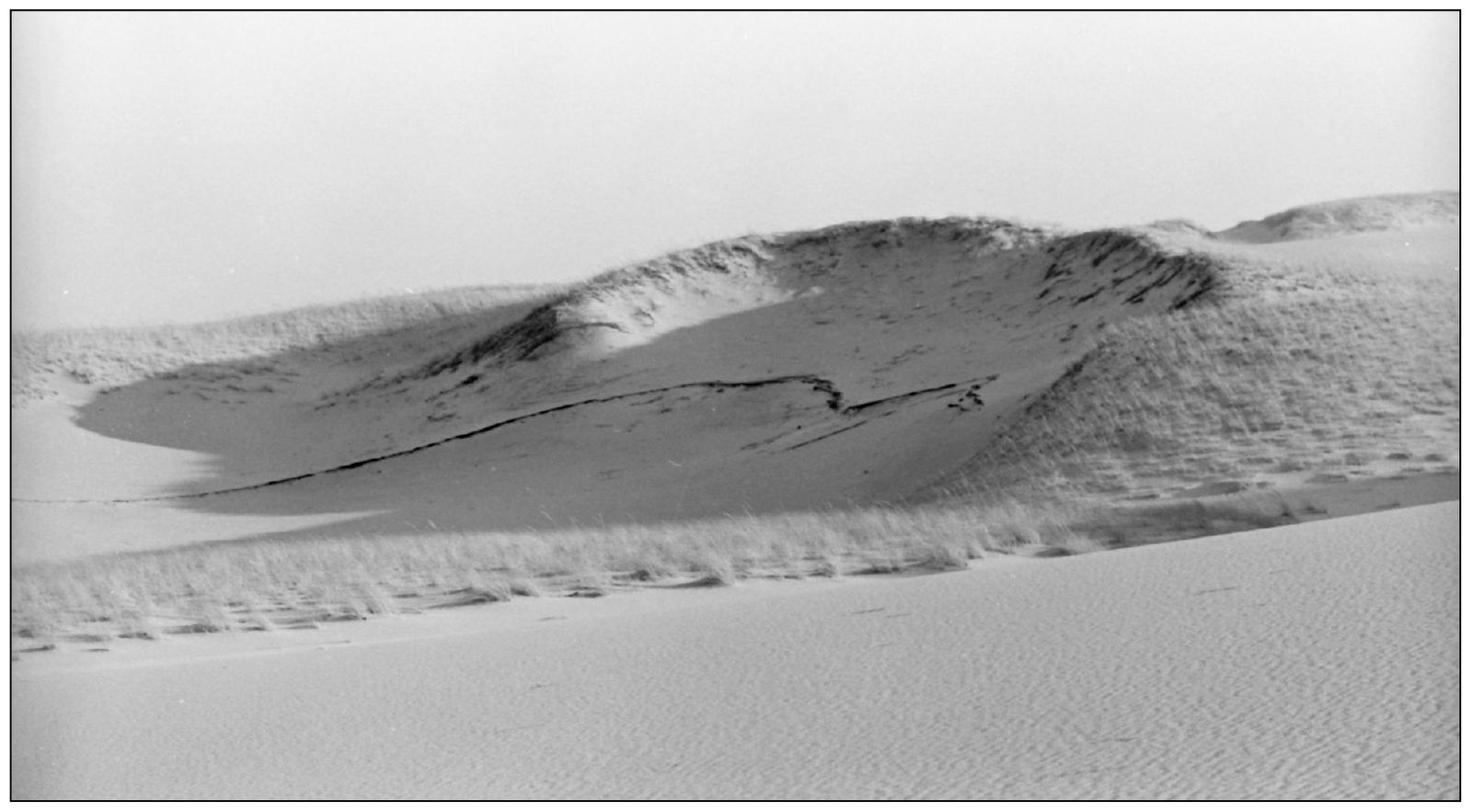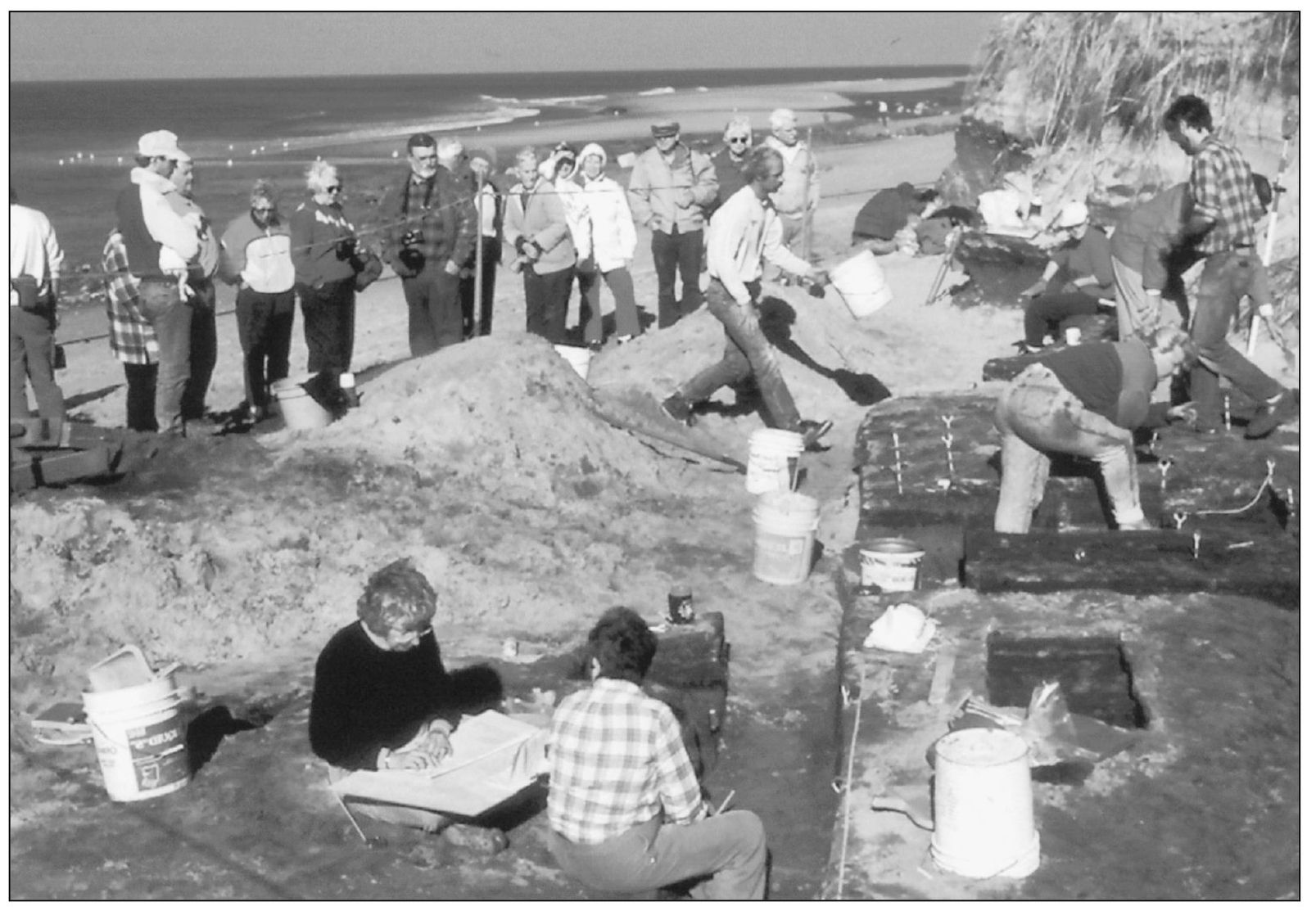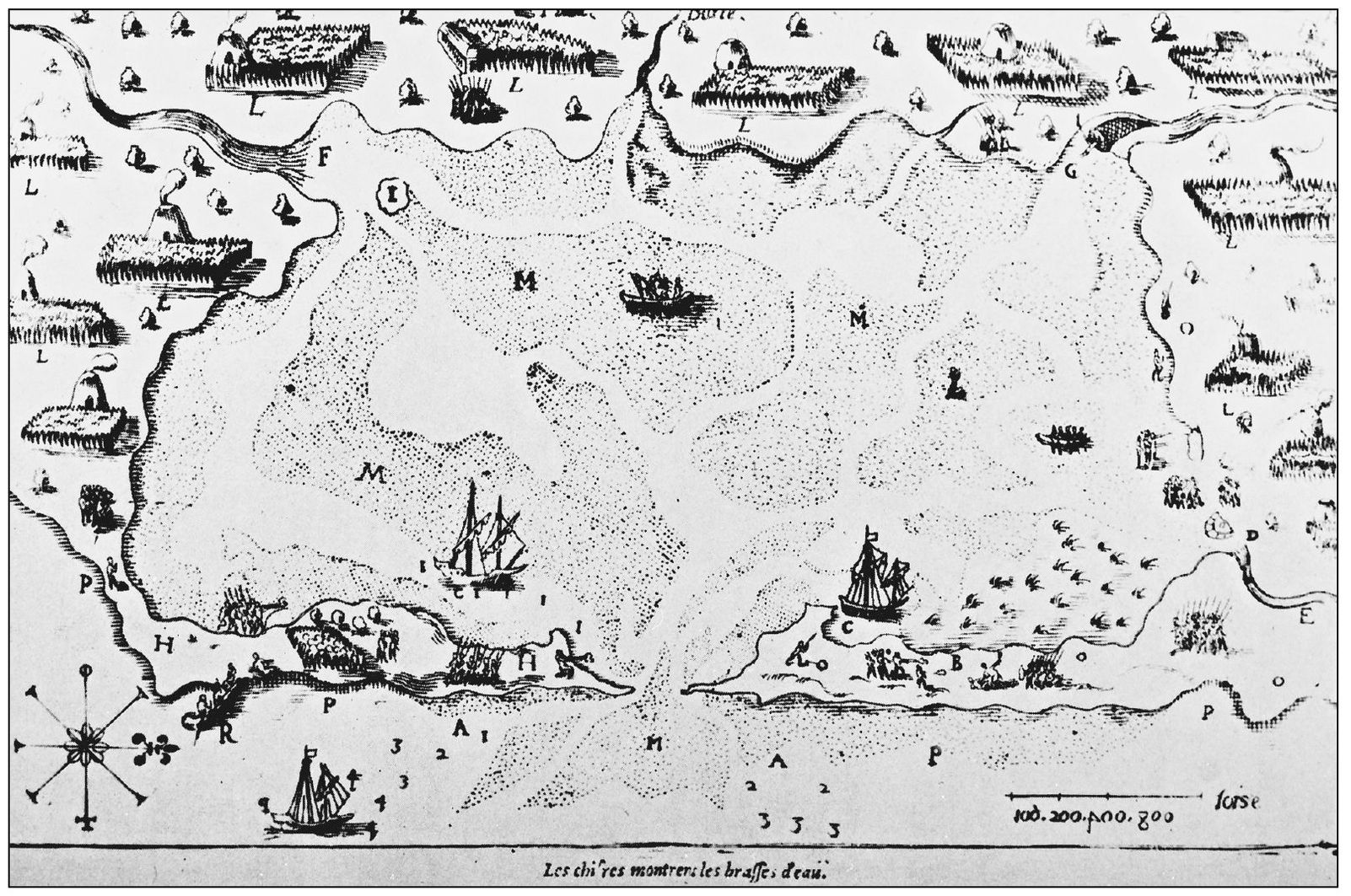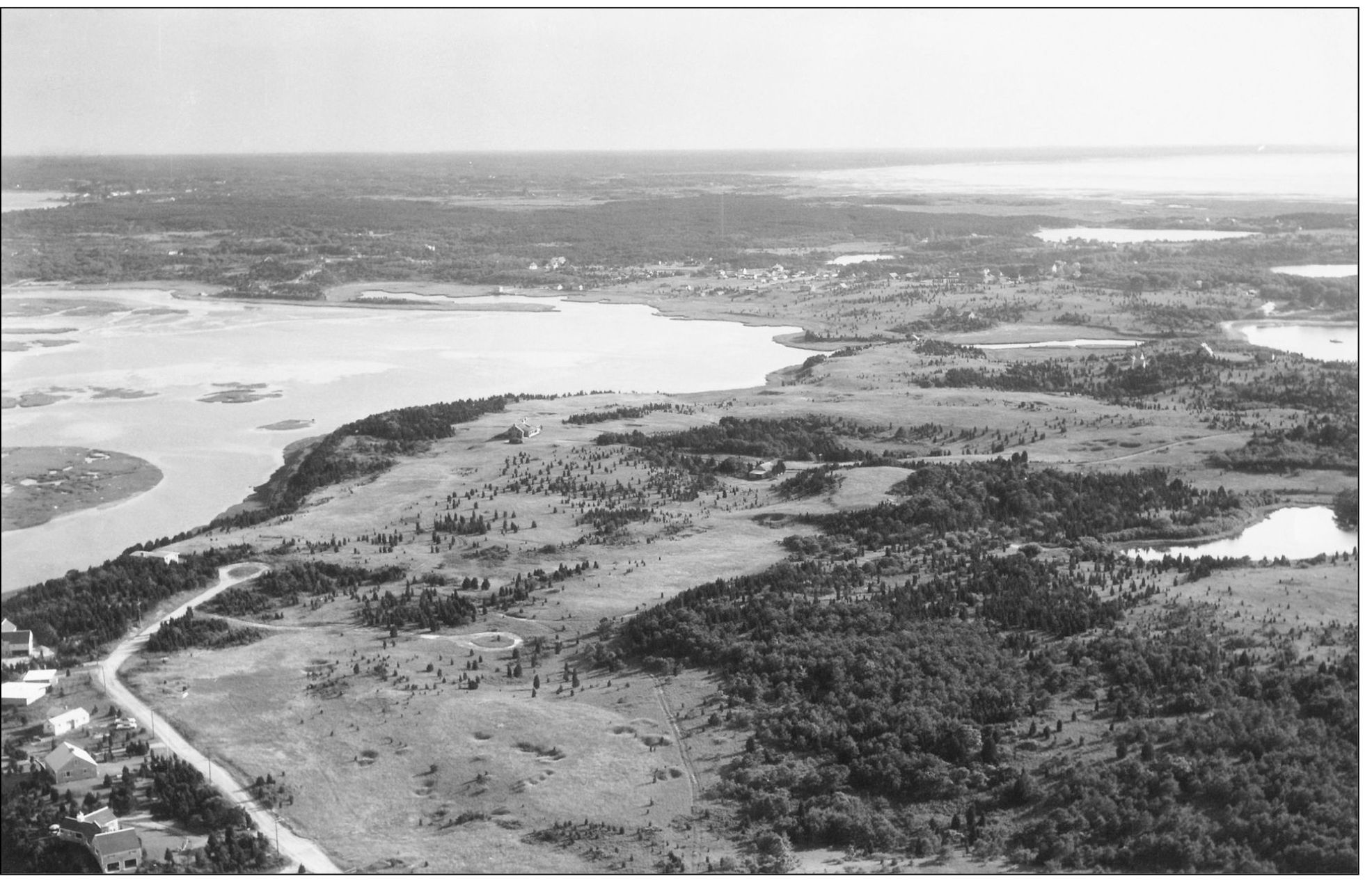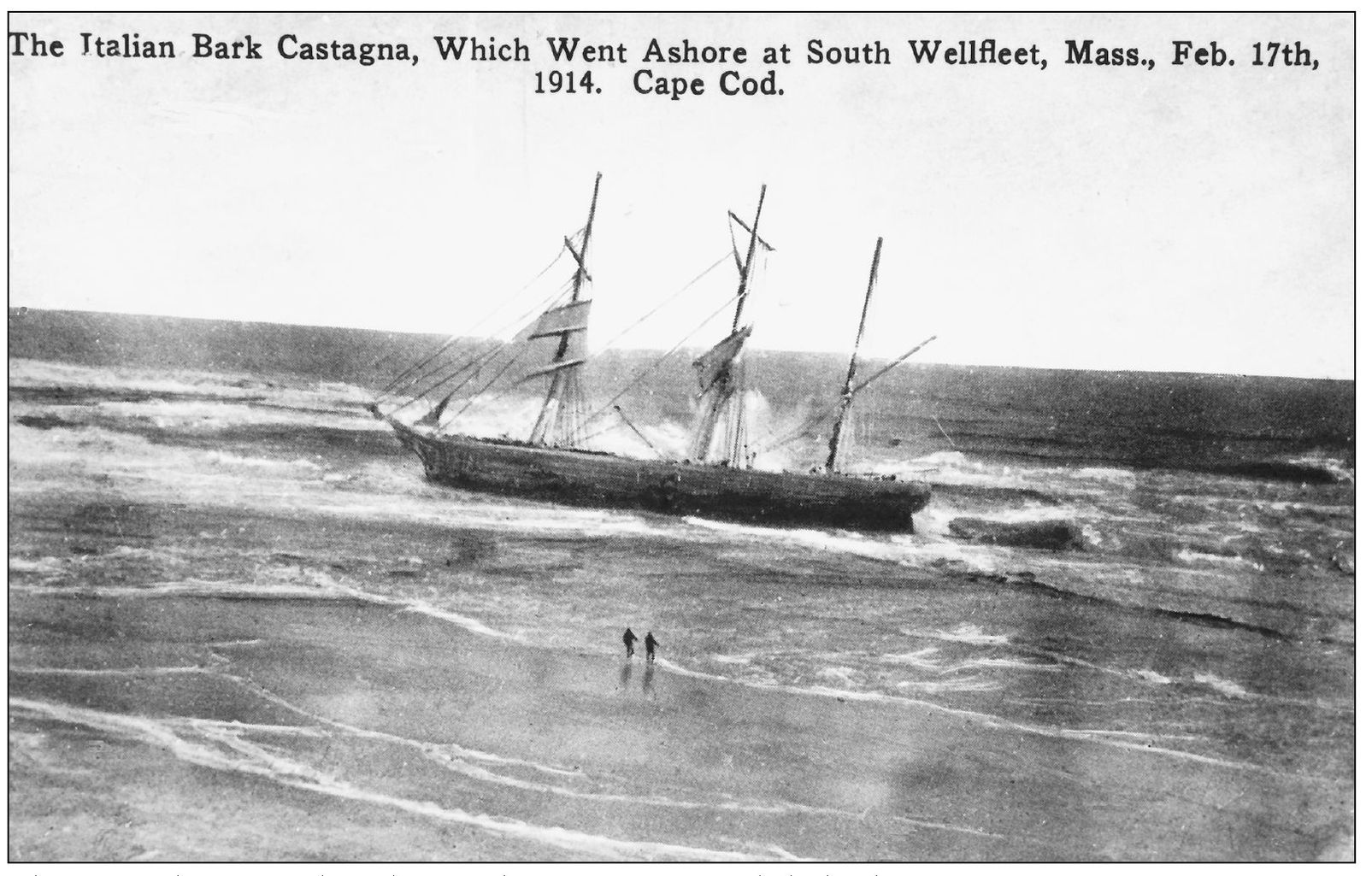One
WILDERNESS AND THE FIRST PEOPLES
It has been 50 years since Pres. John F. Kennedy signed the legislation that created Cape Cod National Seashore in 1961. Today satellite photographs prove what guidebooks began to note as early as the 1930s: The visitor from... inland America drives down the length of this sandy curlicue, and observes that it is taking him well out to sea, and that in spots it seems to be hanging as if by a thread.
Cape Cod was formed by the glacial advance and retreat of the Laurentide Ice Sheet. About 23,000 years ago, the glacier reached its maximum advance and deposited the gravel, rocks, and sand that created the Cape. Some 18,000 years ago, the ice sheet retreated, the glacial melt caused the seas to rise, and what is known as Cape Cod took its familiar shape.
Huge blocks of ice from the glaciers left holes known as kettles that ultimately filled with groundwater. Our host took pleasure in telling us the names of the ponds, most of which we could see from his windows. Thoreau wrote in his book Cape Cod of a memorable visit to an oystermans house at Williams Pond. They were Gull Pond... Newcombs, Swetts, Slough, Horse-Leech, Round, and Herring Ponds. Great Pond in Wellfleet is seen here from the air.
Parabolic dunes, formed when the prevailing west wind blows out the middle of an existing dune, are just one of the remarkable forms nature creates and recreates on the Cape. The forces of waves and wind continue to transport beach and dune deposits, keeping the islands, spits, lagoons, salt marshes, forests, and meadows in continual flux.
Artifacts excavated from 1990 to 1992 at the Carns Site at Coast Guard Beach in Eastham reveal the presence of Woodland Indians from 2,100 to 1,100 years ago. By 3,000 years ago, people left dense deposits of ancient trash, including discarded stone tools, stone flakes, shell from the gathering of shellfish, fish and animal bone, and ash and stone from fires for cooking and heat. Other sites reveal their presence for nearly 10,000 years.
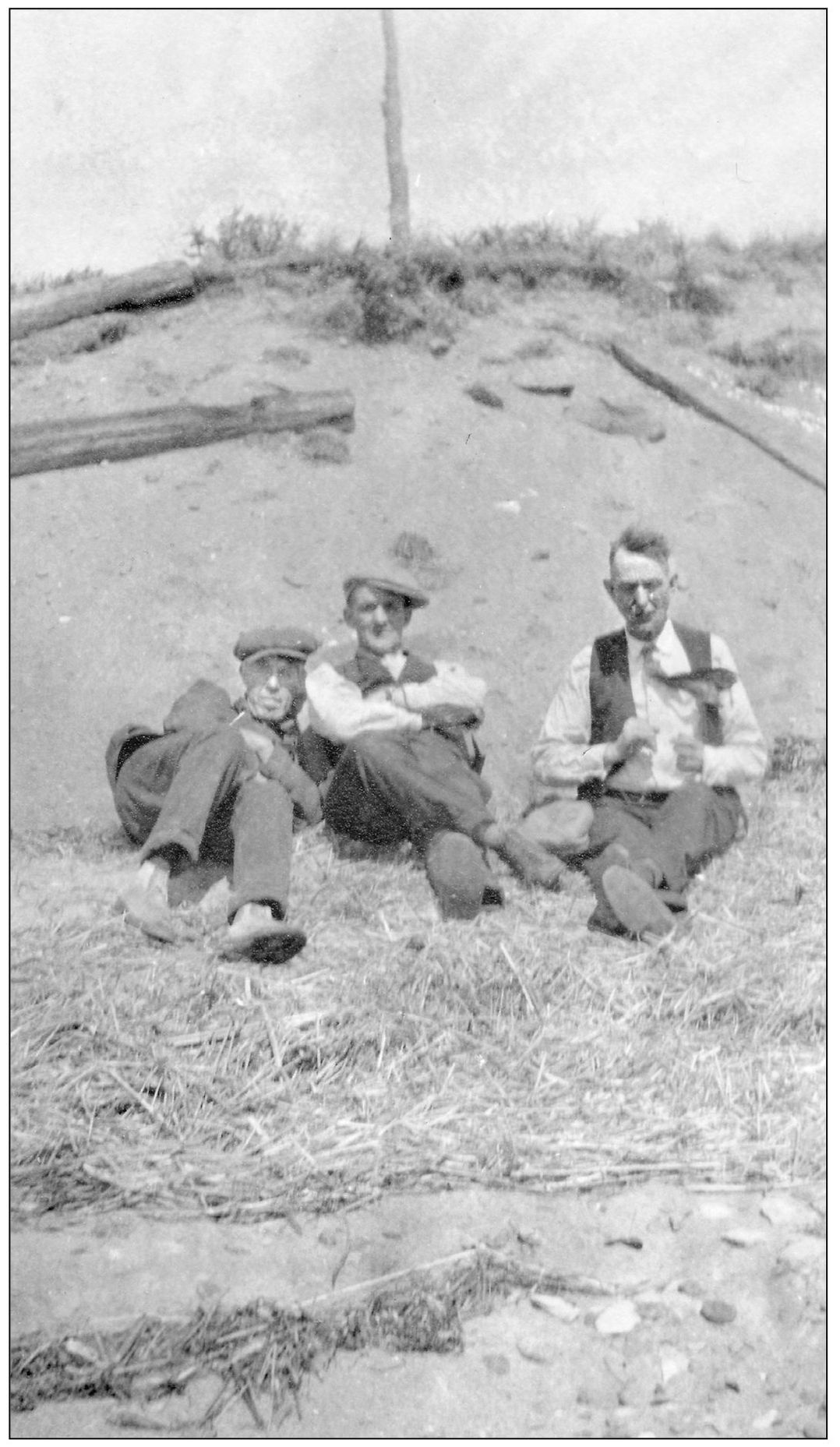
These three men at Indian Neck in Wellfleet were unaware, on July 4, 1927, that Native American remains were buried under the sand. The Indian Neck Ossuary is one of the most important archeological sites on the Cape. Outside the boundaries of CCNS, it was discovered accidentally in 1979, when a backhoe digging a trench for a home improvement project on private land uncovered Native American bones. After determining that the bones were not related to homicide, archeologists from the National Park Service conducted an archaeological salvage excavation to recover the remains. The ossuary, a type of community burial ground in which the bones of several individuals are buried together, contained the remains of at least 56 individuals. Every eight to 12 years, outlying villages would collect remains and return bones to the ancestral village in a ceremonial burial. Evidence of the harvesting of shellfish in the wintertime implies a more established, perhaps year-round, coastal habitation than was previously thought. The burial dates to about 1,100 A.D., but may be as early as 1,000 B.C.
Wampanoag Indians lived throughout much of Cape Cod and many live today. Among them were smaller tribes like the Nausets, who inhabited the southern portion of what would become Cape Cod National Seashore. French explorer Samuel de Champlain sailed into Nauset Harbor in 1605 in search of a site for French settlement. He eventually chose the Quebec area. The map he drew shows some of the 20 to 30 Nauset families he saw in their summer camps along the shore.
On November 9, 1620, the Pilgrims aboard the Mayflower sighted Cape Cod. They set anchor in what is now Provincetown and for the next three months explored the cape. They found a freshwater spring in the Truro area, encountered a few Native Americans, and took baskets of Indian corn buried on a hill near the Pamet River. On December 6, Myles Standish and 18 men camped in Eastham, then crossed the bay to the area known today as Plymouth.
The Pilgrims at Plymouth visited Nauset many times after 1620 to buy food and trade. As with earlier European explorers, they spread diseases for which the Native Americans had no immunity. Many of the Nauset Indians died, and the population declined drastically. In 1639, about half the English in Plymouth relocated to the Nauset area (seen here), settling the town that is now Eastham. Mayflower passenger Constance Hopkins and her husband, Nicholas Snow, were the first known European settlers on Billingsgate Island in Wellfleet Harbor in the 1640s. In 1645, a group of purchasers from Plymouth were granted the land for what are now the towns of Wellfleet, Eastham, and Orleans.

